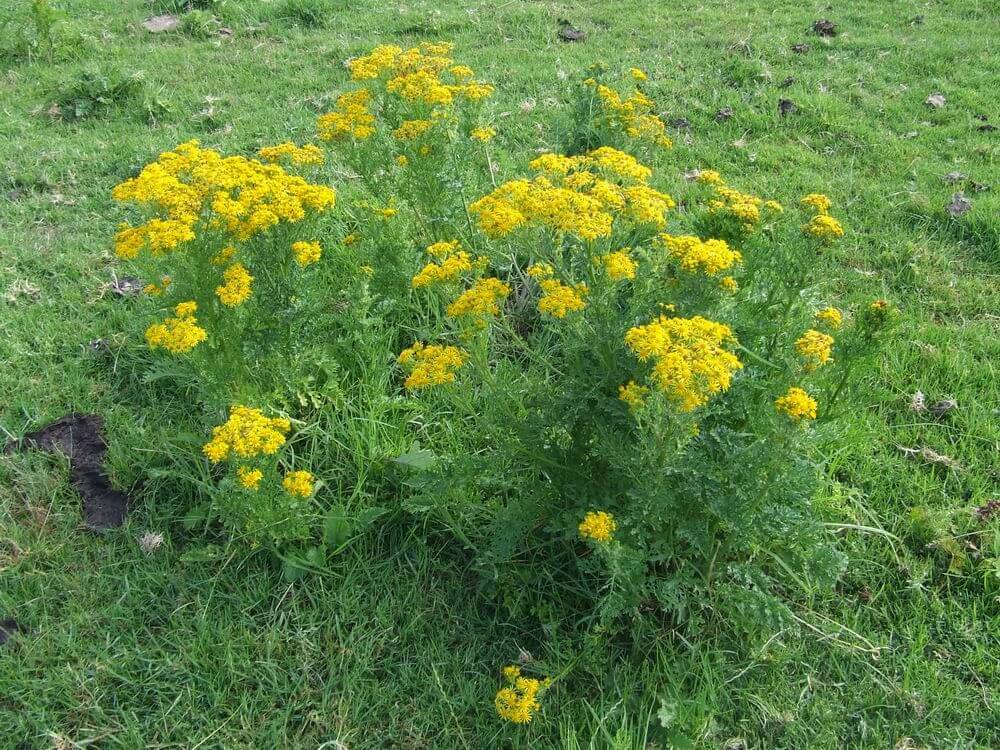Notman Pasture Seeds has put together a small guide on controlling Ragwort in southern Victorian pasture such as Gippsland and south-west Victoria.
Ragwort growing cycle and how to identify
Ragwort, if left undisturbed, follows a distinctive two-year life cycle. In the first year, after most seeds germinate during autumn, the plant forms a low cluster of leaves near the ground, known as a rosette. By the second year, it grows upright, reaching heights of up to 1.5 meters. During this phase, it features twisted dark green leaves and vibrant yellow flowers that cluster at the ends of small branches, giving it a characteristic flat-topped appearance.
However, in pastures, ragwort often exceeds this two-year life span due to interactions with grazing animals and cutting. The constant damage inflicted by stock hooves and grazing leads to the emergence of new shoots either from the original stem or from larger roots remaining in the ground. These damaged plants can transform into substantial bushes with multiple flowering stems, continuing to bloom over several years.

Why it is so invasive?
Spread of ragwort is by seed. The majority of seeds are deposited within 20 m of the parent plant but may be dispersed up to a kilometre or more by strong winds. Don’t rely on slashing to remove ragwort – plants will quickly resprout! Cutting or slashing flowering ragwort stems with no other follow up is ineffective as the plants quickly recover and flower again within a few weeks.
Keeping dense competitive pasture is important
Pasture improvement is an essential part of any control program. Maintenance of a dense vigorous pasture reduces the opportunity for ragwort to establish and spread.
Autumn and early spring control is critical
Critically, Autumn is the best time to control Ragwort as this invasive weed is in its small rosette stage and efficacy is better than a spring application. Herbicides are most effective at the seedling or rosette stage and when the plants are actively growing, so a routine spray program in late Autumn is crucial to controlling emerging new weeds including Ragwort.
Seedlings and small plants up to 50mm: MCPA750.
Rosette stage, 3-5 true leaf stage: Dicamba 500
Spring control of Ragwort
Once stem elongation and flowering has been reached, then the opportunity to control Ragwort has been lost, so it’s critical to control Ragwort whilst it is still in the cabbage stage.
In spring it’s important to note legumes and clovers in pastures are likely to be eliminated with herbicide applications. With all ragwort applications, an Autumn re-treatment of smaller weeds in successive years is necessary to ensure full control long term.
Rosette / Cabbage stage: Triclopyr/Picloram 400, Clopyralid 750SG
Ragwort toxicity
Remember, Ragwort plants sprayed with herbicide are more palatable and contain higher levels of toxins. Livestock love ragwort when it has dried into hay or silage amd ingesting over time can lead to liver damage and ragwort poisoning.
Animals should be excluded from treated areas until any Ragwort has completely recovered or died and there is no visible sign of the dead weed, a process that can take up to six weeks.
Do not include treated Ragwort in hay or silage crops.
Important Disclaimer
To the extent permitted by law, Notman Pasture Seeds (including its employees and consultants) excludes all liability to any person for any consequences, including but not limited to all losses, damages, costs, expenses and any other compensation, arising directly or indirectly from using information or material (in part or in whole) contained on this website.







